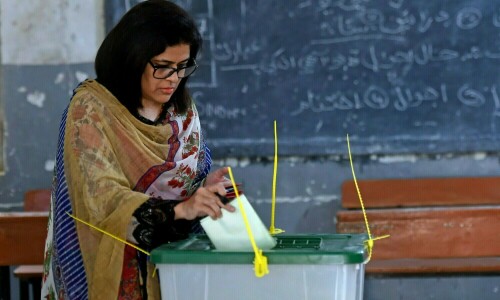ISLAMABAD: According to the most recent figures issued by the Election Commission of Pakistan (ECP), the gender gap has not improved despite the country’s voter registration surpassing 130 million. It is still less than 10 million.
It should be mentioned that there were 128 million voters overall as of December 2023—a rise of more than 2 million votes since then.
The ECP reports that of these registered voters, over 60 million (46.18 percent) are women and slightly over 70 million (53.82 percent) are men; the gender disparity is 9.95 million.
According to an examination of the statistics, Punjab accounts for more over 5 million of the 9.95 million voters that make up the gender disparity in voting, with Sindh (2.24 million), Khyber Pakhtunkhwa (1.96 million), and Balochistan (0.662 million) following closely behind.
Punjab leads with a gap between registered male and female voters of more than 5m
In Punjab, there are currently 74.08 million registered voters, including 39.56 million (53.40 percent) male and 34.53 million (46.60 percent) female voters.
There are 27.33 million voters registered in Sindh, with 14.78 million (54.09 percent) male voters and 12.54 million (45.91 percent) female voters.
There are 22.17 million voters in KP, with 12.07 million (54.43 percent) males and 10.11 million (45.57 percent) females.
Balochistan has 5.43 million registered voters overall. A bit over 3 million voters (56.09 percent) are male, and 2.38 million voters (43.91%) are female.
Among the more over one million voters in Islamabad, 0.574 million men (52.46 percent) and 0.520 million women (47.53 percent) are registered to vote.
The 2 m gender gap in Punjab is a result of seven districts. These are Sheikhupura (0.212m), Kasur (0.221m), Rahim Yar Khan (0.254m), Gujranwala (0.256m), Lahore (0.410m), Faisalabad (0.384m), and Sialkot (0.210m).
Before the general elections of 2024, Sheikhupura was the only district in Punjab where the percentage of female voters was less than 45 percent; women made up 44.96 percent of all voters in the district. The district is no longer on the list, with 45.06 percent of voters being female.
According to the most recent age-wise data, the number of young voters—those between the ages of 18 and 35—has increased to 58.12 million. Based on available data, there are currently 24.66 million 18 to 25-year-old voters in the nation, while 33.46 million voters are between the ages of 26 and 35.
Between the ages of 36 and 45, there are an additional 28.83 million voters. This indicates that 86.95 million (66.88 million) of the 130 million votes are under 45.








